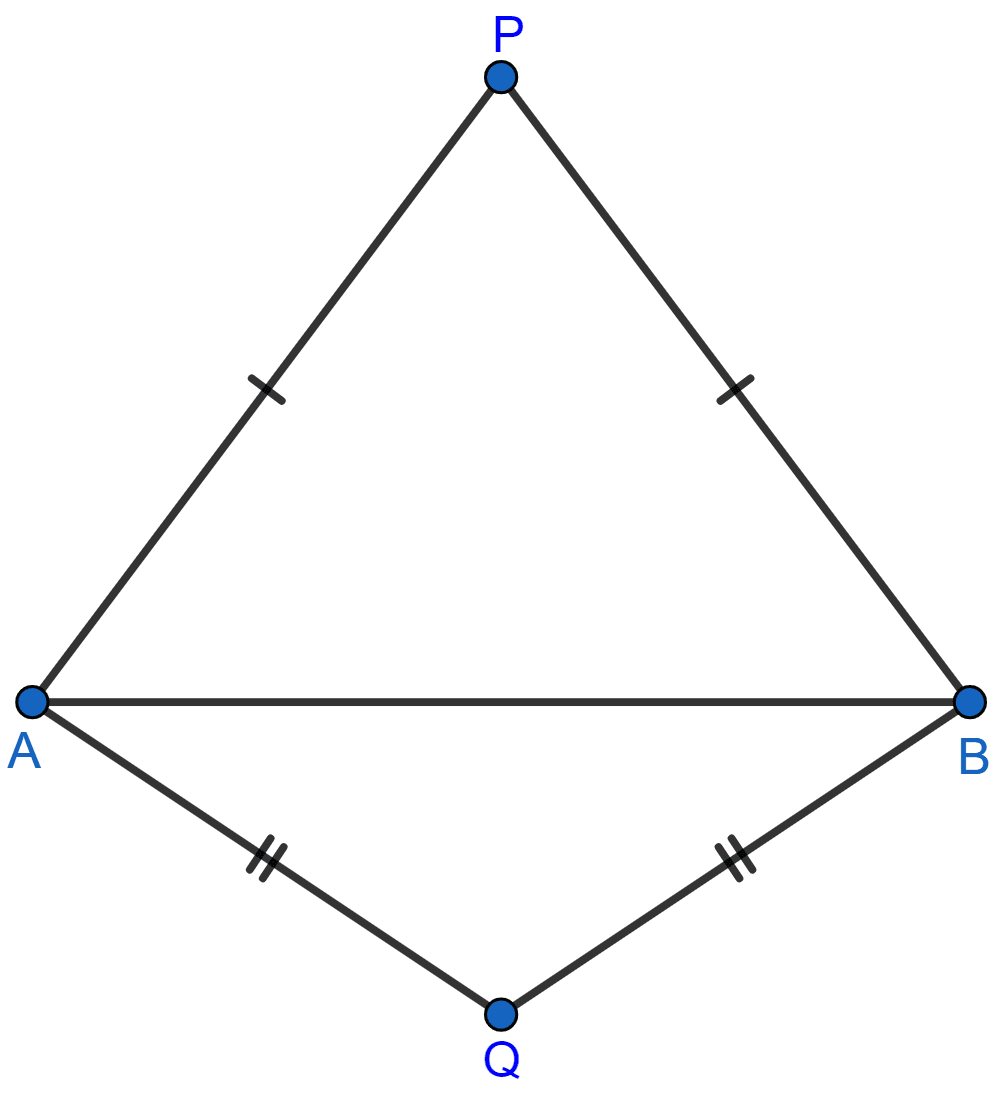Mathematics
Construct a triangle ABC in which angle ABC = 75°, AB = 5 cm and BC = 6.4 cm. Draw perpendicular bisector of side BC and also the bisector of angle ACB. If these bisectors intersect each other at point P; prove that P is equidistant from B and C; and also from AC and BC.
Answer
Steps of Construction:
Draw a line segment BC = 6.4 cm
At B, draw a ray BX making an angle of 75° and cut off BA = 5 cm.
Join AC. ∆ABC is the required triangle.
Draw the perpendicular bisector of BC, intersecting BC at Q.
Draw CX, the angle bisector of angle ACB which intersects the perpendicular bisector of BC at P.
Join PB and draw PL ⊥ AC.

In ∆PBQ and ∆PCQ,
⇒ PQ = PQ [Common]
⇒ ∠PQB = ∠PQC [Each = 90°]
⇒ BQ = QC [As PQ is the perpendicular bisector of BC]
∴ ∆PBQ ≅ ∆PCQ [By SAS axiom]
∴ PB = PC [By C.P.C.T.]
∴ P is equidistant from B and C.
Also,
In ∆PQC and ∆PLC,
⇒ ∠PQC = ∠PLC [Each 90°]
⇒ ∠PCQ = ∠PCL [As CX is angle bisector of ∠ACB]
⇒ PC = PC [Common]
∴ ∆PQC ≅ ∆PLC by AAS axiom.
∴ PQ = PL [By C.P.C.T.]
∴ P is equidistant from AC and BC.
Hence, proved that P is equidistant from B and C and also from AC and BC.
Related Questions
In parallelogram ABCD, side AB is greater than side BC and P is a point in AC such that PB bisects angle B. Prove that P is equidistant from AB and BC.
Construct a triangle ABC, in which AB = 4.2 cm, BC = 6.3 cm and AC = 5 cm. Draw perpendicular bisector of BC which meets AC at point D. Prove that D is equidistant from B and C.
In each of the given figures; PA = PB and QA = QB.
(i)

(ii)

Prove in each case, that PQ (produce, if required) is perpendicular bisector of AB.
Hence, state the locus of the points equidistant from two given fixed points.
In triangle LMN, bisectors of interior angles at L and N intersect each other at point A. Prove that:
(i) point A is equidistant from all the three sides of the triangle.
(ii) AM bisects angle LMN.